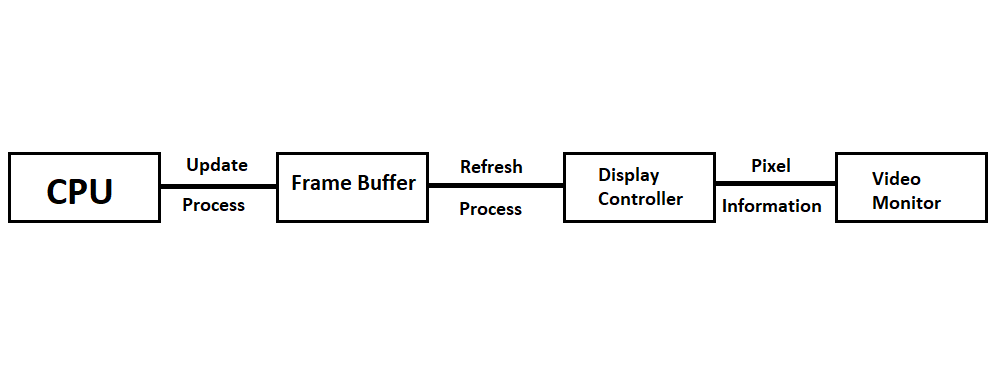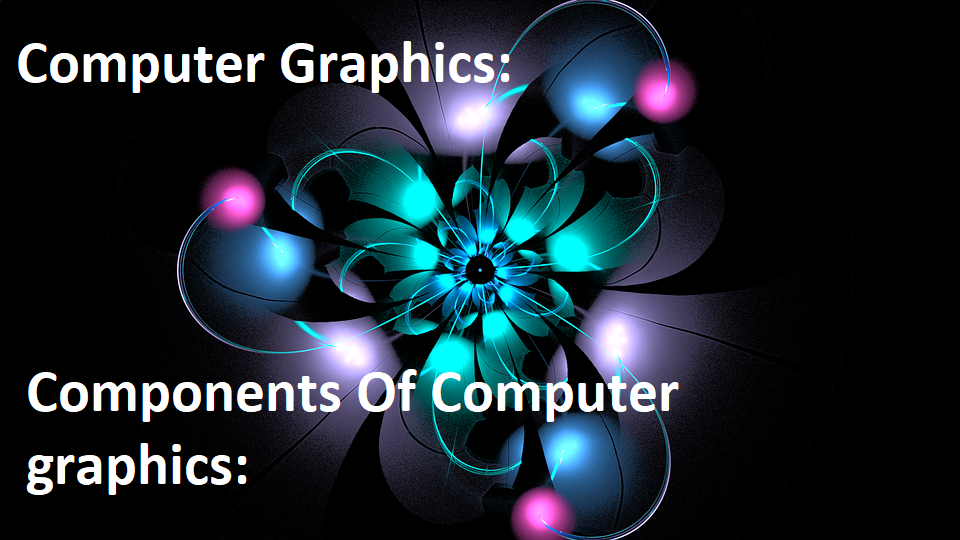Components Of Computer graphics:
Interactive computer graphics consists of three components such as:
1. Digital memory buffer
2. TV Monitor
3. Display controller
Using these components, we are able to see the output on the screen in the form of pixels.

1. Digital Memory Buffer (Frame Buffer)
This is place where images or pictures are stored as an array (matrix of 0 and 1, 0 represents darkness and 1 represents images or picture).
Frame buffer is the video RAM (V-RAM) that is used to hold or map the image displayed on the screen. The amount of memory required to hold the image depends primary on the resolution of the screen image and also the color depth used per pixel. The formula to calculate how much video memory is required at a given resolution and bit depth is quite simple.

Usually frame buffer is implemented using rotating random access semiconductor memory. However, frame buffer also can be implemented using shift registers.
2. TV Monitor:
Monitor helps us to view the display and they make use of CRT (Cathode Ray Tube)
3. Display Controller:
It is an interface between digital memory buffer and TV monitor. The main function of this is to pass the contents of frame buffer to the monitor. The display controller reads each
Successive byte of data from the frame buffer memory and converts 0’s and 1’s into corresponding video signal. This signal is then fed to the TV monitor to produce a black and white picture on the screen. Now, display controller is recognized as display card and one of our choice can be VGA card with a resolution of 640 x 480.

